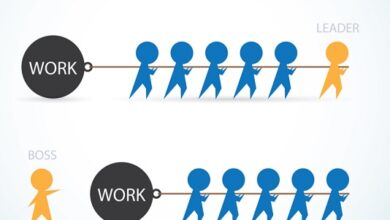What is chatbot used for its 5 components Advantages and challenges
What is chatbot
Here we will describe you the details about What is chatbot used for its 5 components Advantages and challenges.
It is a software developed to manage the exchange of messages through the computer, simulating a human conversation. Like most technological tools, it has its origins in the English language and represents the combination of the words “chat” (conversation) and “bot” (robot).
In companies, chatbots are also called virtual assistants, virtual agents or just bots. To carry out this chat between human and machine, the chatbot considers 5 components that work together.
5 components of Cahtbot
1. Software (chatbot platform)
Chatbot runs on a software platform specially programmed to perform this function. Through it, we manage the chatbot, conversations, calls, statistical reports and integrations with systems already used by the company.
2. Knowledge base
Developed to handle a large volume of questions and answers to automate conversations or processes, the software can answer trivial questions. As long as your knowledge base is constantly fed by the Human Resources manager.
3. artificial intelligence
This component is crucial for the operation of chatbots, that is, to deliver a quality experience to users, like a real dialog, these software use a methodology known as Natural Language Processing (PLN).
Through it, the chatbot manages to humanize interactions, as it is programmed to interpret the interlocutors’ intentions, whether in text or voice dialogues.
4. Conversational channels
It is the company that defines which channels the chatbot will serve. For this, managers must consider the type of relationship they maintain with their target audience. In general, virtual assistants are installed on websites, own or popular applications, such as Facebook Messenger, Telegram or WhatsApp.
5. Integrations
The fifth and final component lets you explore the full capabilities of the chatbot. In this sense, it can work integrated with other software and systems already used by the company. Thus, integrated, the virtual agent can perform tasks globally.
Chatbots are able to perform various relationship and customer service functions on the company’s digital channels. The most common are:
- customer service (SAC);
- lead capture;
- e-commerce;
- marketing and sales campaigns;
- conducting research;
- booking and reservation services;
- database and CRM qualification;
- teaching and learning;
- training;
- human Resources.
It is precisely the application of the chatbot in the Human Resources sector, conducting interviews , which we will go into in depth in the next topic.
How does a chatbot interview work
In companies, the personnel department has great demands, especially during hiring periods. In these cases, human resources chatbots act as virtual assistants.
Therefore, they work from recruitment to employee relations, mainly to answer questions regarding salary, benefits and vacations. Chatbots can also be programmed to clarify internal policies and other day-to-day business issues.
But how does a job interview by chatbot work in practice? First, it is necessary to highlight that chatbot interview is one of the steps suggested for the recruitment and selection process .
By using it, the Human Resources manager can count on more ease when choosing the ideal candidate in a simple and objective way. In practice, interviews conducted by virtual assistants can be technical, for example a cultural fit test or even a checklist of basic job requirements.
As the selection process takes time, chatbot interviews can streamline this step. Thus, they can be applied to publicize the vacancy on social networks, for example, when the candidate interacts with the company applying for the job.
In this way, with the help of the virtual assistant, the HR department is able to pre-select candidates for the position. For this, the manager organizes a series of pre-defined interactions to verify if the candidate has the skills and knowledge required for the position.
The chatbot interview works as a filter, recruiting only candidates with a profile for the role. Furthermore, the dialogues between the software and the interested party will form a database for the company, in addition to the curriculum. This way, it is easier for the recruiter to find a compatible profile in future selections.
Advantages of chatbot
First of all, it is necessary to demystify the idea that the chatbot can replace the human factor. On the contrary, the main benefit of the virtual assistant is to optimize the recruiter’s time and make their work more assertive.
Therefore, having a software to assist in the tasks of the Human Resources sector brings many advantages. The chatbot is an allied tool for the manager and offers many benefits to the business.
1-Cost reduction
Virtual assistants can operate alone, without the need to be controlled by human attendants. This means less flow in call centers and a reduction in online collaborators to serve customers.
This scenario represents the reduction of costs and expenses related to the company’s Customer Service (SAC).
2-Recognized languages and interfaces
Communication with customers becomes easier and more efficient when the organization offers them languages and interfaces they are already used to.
This is the case for common applications such as WhatsApp and Facebook Messenger. In this case, as they are everyday tools, customers feel free to contact the company.
3-engagement
Chatbots are improved to the point of easily reproducing quality human service. This feature makes a difference when, even aware that they are dealing with a virtual assistant, the client receives qualified treatment.
Thus, by feeling satisfied and captivated, the company generates engagement with the consumer/customer. Another advantage of the differentiated service offered by the virtual assistant is the reduction in the abandonment rate, especially on the website.
4-Scalability
As they are automatic and programmable software, chatbots are available 24 hours, every day of the week. Thus, interaction with the public happens uninterruptedly and with numerous simultaneous visits, if applicable. And the best part: no waiting in line to irritate the customer.
5-customization
Virtual assistants are customizable, that means it can cater according to the target audience profile. It’s an advantage that, when used well, generates even more engagement.
If the organization knows its customer‘s profile, the chatbot will be customized for the most appropriate service for him. This feature preserves the company’s style, bringing it closer to its audience.
6-Motivation
Combating the lack of motivation at work is one of the biggest challenges for companies. Keeping employees willing to achieve goals and meet objectives requires strategy, but guarantees the performance of teams.
In this context, chatbots are advantageous, as they do not require motivation, nor will they be charged for more engagement or productivity.
7-Quality of service
Because of their functionality, virtual assistants can be great employees. As they act as salespeople, they clarify customer queries, create smart filters and store relevant information.
In addition, chatbots also memorize useful data for the consumer, such as the user’s purchase history, interactions and interests, all to facilitate the next contact and promote sales.
Another benefit of chatbot is the possibility of performing large volumes of service quickly and simultaneously.
What are chatbots for?
With consumers increasingly informed and demanding, companies need to invest in interactive agents in their daily operations, customer communication and sales processes.
This is a fact.
But how can chatbots help?
We are going to present some examples that will help to understand its possible applications.
1-Offer new relationship possibilities
Chatbots expand your reach and communication with your audience.
Several platforms already make use of this feature to reach the user with the right message at the right time, from the top to the bottom of the sales funnel .
In other words, they are prepared for different stages of the audience.
By enabling more personalized communication, based on the history of interactions with the user, companies are able to build a more reliable relationship with each one of them, meeting specific demands.
2-To optimize the customer service process
There are a variety of questions that most customers usually ask, especially when dealing with an e-commerce.
See just a few examples:
- What are the paying ways?
- How long to deliver?
- Can I exchange a product?
- What guarantee is offered?
- How is the shipping cost determined?
- Why do I need to inform my CPF?
So, optimizing customer service requires having ready-made answers to common questions on hand.
You cannot direct employees to write the same answers every time, especially if there is technology to meet this demand.
The solution? Embed a chatbot on your website or any other communication channel.
In addition to directing your team’s efforts to more interesting and important activities, you can provide faster responses to the customer and improve their experience.
And if he leaves satisfied , the greater the chance of buying and referring your company to friends.
3-To connect with leads and customers
As we mentioned, chatbots use artificial intelligence to record users’ words and, later, provide more effective responses.
In that sense, you can use this feature as an integral part of your content marketing strategy .
Yes, it is quite an opportunity.
Based on the lead or customer’s message history, the bot can suggest content that is related to the words used and that pique the user’s interest.
From the terms most searched for by them in the tool, you have valuable information to propose topics for your blog, for example.
And the benefits of this strategy are obvious.
By offering relevant and quality content, in addition to helping the user to solve their problem, you strengthen the relationship between your company and the public.
4-To share information among the team
In the same way that you can use chatbot to communicate with your audience, it is also possible to incorporate it into the software used in the company’s internal communication .
Thus, you are able to share information between teams and departments in an agile manner, which facilitates operational and management tasks, in addition to offering more time to focus on more complex issues for the business.
In the end, we are also talking about an important tool aimed at productivity .
5-To talk to users where they are
There’s no denying that instant messaging apps like Messenger, WhatsApp and Skype, as well as social media , are one of the main ways to communicate today.
As people already know and are used to these channels, there is nothing fairer than incorporating bots in the spaces that your audience uses the most to facilitate communication and optimize service.
The challenge here is to identify which channels your audience prefers, as there is a wide variety of them.
6-To automate sales
You mean chatbots can even automate the sales process?
That’s right!
By typing what you want in the dialog box, the chatbot will send the information to the department responsible for this process.
Also, the bot remembers your preferences and uses that information when you return.
That way, you don’t have to repeat the steps in the sales process over and over again.
We are talking not about a futuristic perspective, but about an already-in-use facility.
In the United States, Uber is an example of a company that uses this technology to its advantage.
If you are chatting with a person on Messenger and they send you their address, just click on that address and the driver will know that your destination is there.
What are the challenges of using chatbots?
While chatbots improve CX and benefit organizations, they also present various challenges.
These challenges include the following:
- New technology, new obstacles. Chatbot technology is still new and faces obstacles that organizations may not know how to handle. While AI-enabled bots can learn from each interaction and improve their behaviors, this process can cost organizations a lot of money if the initial interactions cause customers to disengage and turn away.
- Security. Users must trust the chatbot enough to share personal data. Therefore, organizations must ensure they design their chatbots to only request relevant data and securely transmit that data over the internet. Chatbots should have secure designs and be able to prevent hackers from accessing chat interfaces.
- Varieties in how people type their messages. This can lead to misunderstood intentions. Chatbots must handle both long and short sentences, as well as chat bubbles with lengthy content versus multiple short submissions.
- The different ways in which humans talk. Chatbots can struggle to understand these variations. For example, the user may use slang, misspell words or use acronyms. Unfortunately, NLP is limited and cannot fully resolve this challenge.
- Unpredictable human behavior, moods and emotions. Humans are random and emotions and moods often control user behavior, so users may quickly change their minds. After initially asking for a suggestion, they might want to give a command instead. Chatbots must adapt to and understand this randomness and spontaneity.
- User satisfaction. Users always want the best experiences but are rarely satisfied. They always want the chatbot to be better than it currently is. This means organizations employing chatbots must consistently update and improve them to ensure users feel like they’re talking to a reliable, smart source.




